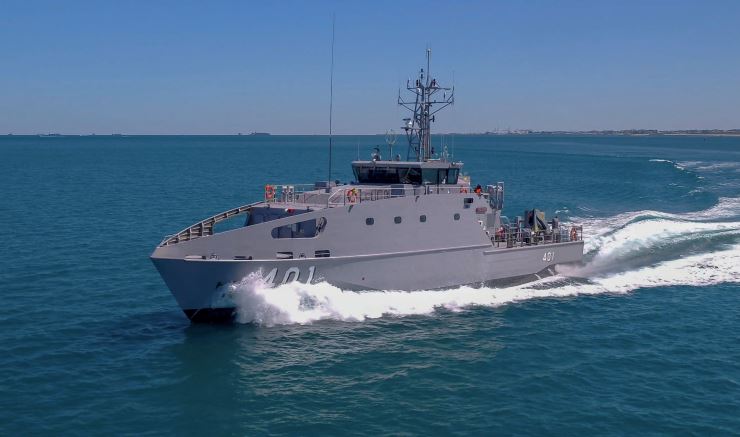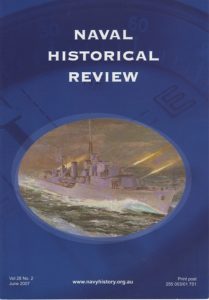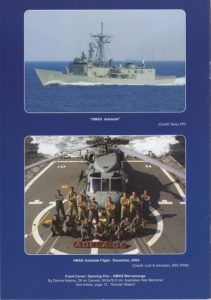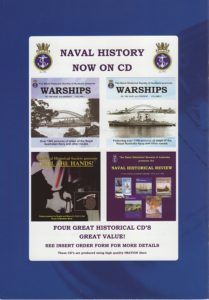- Author
- A.N. Other
- Subjects
- Ship design and development
- Tags
-
- RAN Ships
- None noted.
- Publication
- September 2024 edition of the Naval Historical Review (all rights reserved)
By Zuhal Sharifee
Overview
The Guardian-class Patrol Boats are a class of small patrol vessels developed by the Australian shipbuilding company Austal. The patrol boats are delivered under the Pacific Boats Replacement Project, valued at over $AUD400M, which is part of the Commonwealth’s Pacific Maritime Security Program (PMSP) that aims to strengthen maritime security across the South Pacific. The program intends to bring out 24 Guardian-class patrol boats with safe and secure berthing, and a package of maintenance and sustainment support for the boats (ACT 2021).
The original program was for 20 Guardians with the first to be delivered from Austal’s Henderson, Western Australia shipyard in December 2018. Excellent progress has been made with the 20th boat delivered in July 2024, on average a commendable delivery rate of one vessel every four months. In terms of capacity this is Australia’s largest shipbuilding project since the sixty WWII Bathurst-class corvettes. Owing to operational replacements the program has now been extended to 24 Guardians with the last due to be delivered in 2026.
The Guardian-class are designed to be upgraded replacements for the Pacific-class patrol boats delivered from 1987 to 1997. The main difference is the Guardians are steel-hulled and at 39.5 meters in length they are 25% longer than their predecessors which were aluminium-hulled. These larger replacement vessels have improved seakeeping, better amenities, and an enhanced mission capability – including RHIB stern launch recovery system – which provides Pacific Island nations with a much-improved naval asset to carry out border patrols, regional policing, search and rescue (Naval Technology, n.d.).
As part of the PSMP the Guardian-class come with a comprehensive package of capability, sustainment, training and coordination designed to strengthen national and regional maritime security for 15 Pacific Island countries and Timor-Leste to help better surveil illegal fishing, maritime terrorism, piracy and transnational crime in the region. The program represents the Australian Government commitment for the next 30 years to maintain peace, security and prosperity in the Pacific. The program includes enhanced fixed-wing aerial surveillance capabilities, uncrewed aerial vehicles, and satellite surveillance capability. Also, training for partner country crews to support safe operations, region-wide contracted aerial surveillance services and enhancement of regional coordination and communication. In addition, Defence is arming their Guardian-class Patrol Boats with 12.7 mm machine guns (ACT 2021).
Complications with the Guardian-class
Despite their advanced capabilities, the Guardian-class has significant issues, including design flaws and operational errors. Addressing these issues is critical to ensuring the effectiveness of its maritime security.
Minister for Defence Industry Pat Conroy has disclosed that the patrol boats have several defects, including issues with the exhaust system – carbon monoxide is being pumped into the ship. Several other design flaws were also found in the patrol boats.

In February 2021, cracked coupling was found between the engine and the gearbox. In May 2021, the ships’ sick bays had poor ventilation (Zaczek and Wu2022). Austal appears to have satisfactorily addressed these issues. Another issue regarding the Guardian-class patrol boats concerns operational procedures.
In August 2021, the Samoan ship Nafanua ran aground on a reef near Salelologa wharf. A police tribunal found the officer in charge guilty of negligence. In March 2021, a Guardian-class of the Solomon Islands ran aground on a reef while navigating near the harbor of Point Cruz in Honiara. This incident occurred due to navigational errors.
In June 2024, Fiji’s Navy patrol boat Puamau ran aground on her maiden voyage, just months after being gifted by Australia. In mid-July, a Board Inquiry (BOI) concluded their investigation into the cause of the incident revealing significant breaches, negligence, non-adherence to the application of professional and accepted navigation practices and mariner skills. The investigation also found problems with the actions of the commanding officer and his command team – ‘non-compliance to accepted best bridge management processes…in the application of safety measures under such environmental conditions when in confined and hazardous waters close to Fulaga Island’ and ‘certain best mariner practices and processes associated with the use of navigation equipment for situational awareness and decision making was neglected by the commanding officer and his bridge team’.
The BOI has made several recommendations. These include holding the commanding officer accountable for the ship’s ground; ensuring comprehensive patrol briefings and navigational planning; providing all seaman officers with navigation books; and reviewing bridge procedures during entry into confined waters (RNZ 2024). In addition, two vessels gifted to Vanuatu were badly damaged in cyclones when alongside in 2023. One was damaged beyond repair and the other towed to Cairns for repair.
Addressing the challenges
The Guardian-class Patrol Boats play a crucial role in maintaining maritime security across the South Pacific, providing Pacific Island nations with enhanced capabilities to combat illegal activities. However, design flaws and operational errors which have plagued these vessels highlight the need for significant improvements in both manufacturing and operational procedures by addressing the recurring defects through investigation and enhanced Quality Control during the manufacturing process, and regular audits and inspections. Enhancement of the training programs for the crews of patrol boats, including comprehensive navigation training to ensure officers are well-prepared to handle the complexities of maritime navigation in confined and hazardous waters, is also necessary.
Addressing these challenges will ensure the Guardian-class fulfil their intended purpose effectively and will preserve Australia’s reputation as a reliable partner in the Pacific region.
References
ACT, R. (2021). Department of Defence. [online] Defence.gov.au. Available at:
https://www.defence.gov.au/defence-activities/programs-initiatives/pacific-engagement/maritime-capability.
IB, R. (2023). Australian Government publicise problems with Pacific patrol boats. [online] Islands Business. Available at: https://islandsbusiness.com/news-break/australian-government-publicise-problems-with-pacific-patrol-boats/.
McPhedran, I. (2014). The navy’s patrol boat fleet is overworked and under maintained according to a new report. news.com.au.
Naval Technology. (n.d.). Guardian Class Pacific Patrol Boat. [online] Available at: https://www.naval-technology.com/projects/austal-pacific-patrol-boat-40/?cf-view.
RNZ. (2024). ‘Critical deficiencies’ found in Fiji ship grounding investigation. [online] Available at: https://www.rnz.co.nz/international/pacific-news/521866/critical-deficiencies-found-in-fiji-ship-grounding-investigation.
Zaczek, Z. & Wu, D. (2022). Defects found in Australian-made patrol boats given to Pacific nations. [online] skynews. Available at: https://www.skynews.com.au/australia-news/defence-and-foreign-affairs/defence-department-reveals-potential-fault-with-australianmade-patrol-boats-given-to-pacific-island-nations/news-story/b900fa49e53a825b080bb606eac02568.




